How to Set the Path and Environment Variables in Windows?
Setting the environment variables and course in Windows is an easy procedure. Recognizing the distinctions of the course and surrounding elements inside the unexpectedly changing computing subject is critical. These ostensibly technical elements are essential in determining how customers' running structures interact with extraordinary programs and carry out orders as they explore the virtual world. To make clear the meaning of direction and environment variables and offer a foundation for the in-depth steerage that follows, this creation seeks to demystify the notion.
Fundamentally, direction variables direct the operating device to the best locations in which executable documents are saved by performing road maps. Consider it the machine's GPS, identifying the routes it has to go, a good way to easily carry out orders and open apps. To completely utilize path variables, it is critical to recognize their feature and intention.
To begin, right-click on inside the File Explorer or on your laptop on the "This PC" or "Computer" icon, then select "Properties." Select "Advanced machine settings" from the menu at the left. Click the "Environment Variables" button inside the System Properties box. User and System variables are the 2 components now visible in the Environment Variables pane. Choose the "Path" variable within the "System variables" (for all customers) or "User variables" (on your consumer account) sections to set the route. Click "Edit" and "New" to add a new course. Locate the listing, copy the program direction you must add, and then paste it into the brand-new access. Press "OK" to verify. To enforce the changes, bear in mind restarting any energetic apps or command activities. That's all; Windows's route and surroundings variables have now been effectively hooked up!
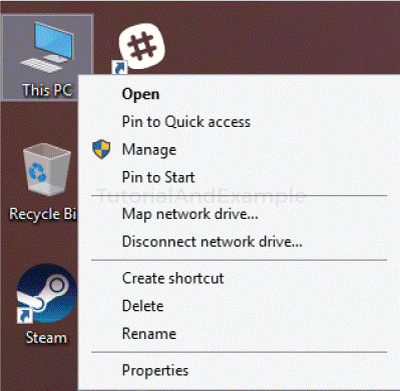
We differentiate between machine and user-precise pathways by delving deeper into direction variables. System path variables dictate the overall behaviour of the PC system, impacting all users. However, user-specific path variables offer a customized revel, enabling users to adjust the executable file placed on their gadget to suit their necessities.
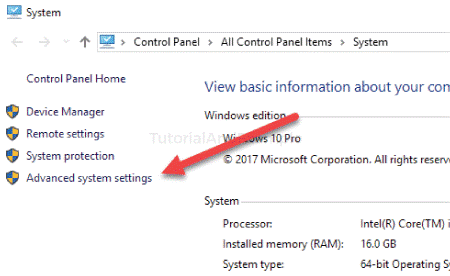
Moving directly to surroundings variables, we enter a dynamic area wherein values change depending on gadget operations and human interactions instead of being steady. Variables within the surroundings affect how those strategies behave, serving as dynamic stand-ins that decorate the device's normal overall performance.
Comprehending Path Variables
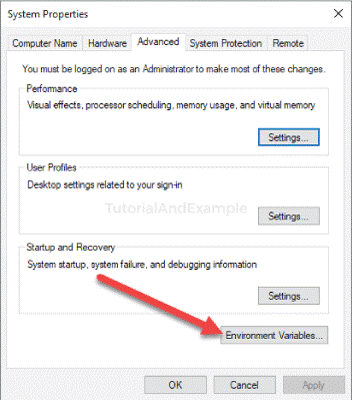
Comprehending course variables is important for maximizing the competencies of your Windows OS. Path variables are essential to the clean operation of software programs because they provide the directories that the running system appears for executable files. This section explores the definition, kinds, and uses of direction variables within the Windows surroundings, going deep into their nuances.
The dynamic additives referred to as course variables, or the device's "PATH," specify the file directories that the working device must look for executable files. The files in these folders are vital for the right operation of some software program programs and machine commands.
Path variables are often used to present the operating machine in a standardized manner to find executables so that it can find them and run them more quickly. The working gadget searches through the folders precisely in the course variables to find the applicable executable report whilst a person launches a program or troubles a command.
Comprehending the operational concepts of course variables is essential for efficiently setting and optimizing their use. When the gadget is configured effectively, software commands can be done smoothly, improving the user's enjoyment.
Path Variable Types
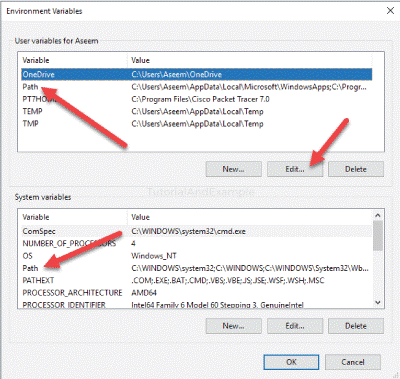
Variables within the System Path
Variables associated with the gadget direction affect each user at the machine globally. They are important to operating vital gadget commands and strategies because they're established on the system level. The gadget route variables cover directories conserving essential executables and device files required for the running gadget's overall performance and stability.
For example, system path variables should comprise folders like "C: WindowsSystem32," which keep essential device documents. Executable files saved in those folders are to be had to the whole gadget.
Specific Path Variables for Users
On the other hand, person-unique path variables offer a customized approach to setting up the directories that the running system looks via to find executable files. On a Windows device, each user could have a unique collection of course variables, allowing customized settings with their particular necessities and alternatives.
Consumer-specific direction variables are useful for tools and apps that use a specific person. To offer simple access to these gear from the command line, a developer may additionally, for instance, add the listing conserving their improvement equipment to their user-precise path variables.
The process of configuring consumer-specific course variables includes the addition or amendment of person surroundings folders. The significance and configuration of consumer-particular course variables are examined in this segment, along with beneficial examples and endorsed practices for the best configurations.
Environment Variables
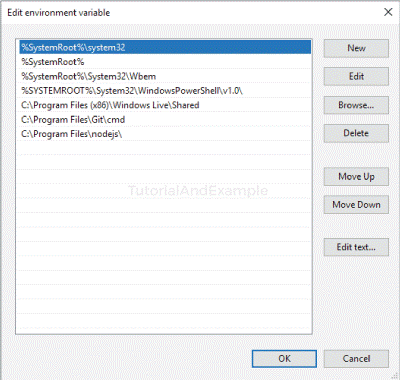
Environment variables are dynamic quantities vital to the operation of laptop structures. They are characteristic of crucial factors affecting how programmes and tactics running inside the environment behave. Users who need to optimize their device setups should realize the nuances of environment variables. This section explores the kinds of surrounding variables, their significance, and their actual international uses.
An environment variable is fundamentally a named, dynamic cost that can adjust how PC systems act. Software programs, scripts, and the working gadget might also all get admission to and trade these variables; therefore, they are now not static. Environment variables are essential to the operation of the device because they deliver packages with a flexible way of obtaining facts about the environment in which they're working.
In truth, upon startup, the software can obtain pertinent surrounding variables to acquire records of the gadget, person preferences, or specific setups. Because of its noticeably adaptable and dynamic character, software programs can function flawlessly in numerous settings.
Types of Environment Variables
System environment variables and consumer-precise environment variables are the two number one classes into which environment variables can be widely divided.
- Variables within the System Environment
Global configurations that affect the working system are called device environment variables. Since they may be to be had by all users and procedures, they greatly impact how the gadget behaves. Important details on gadget paths, default setups, and machine-extensive settings are frequently protected in these variables.
For instance, a gadget environment may set up the path in which system executables are saved or the default location for user profiles. System directors and strength customers who want to adjust the device's normal behaviour ought to comprehend and set these variables.
- Specific Environment Variables for Users
On the other hand, user-precise surroundings variables are customized for a particular person's money owed. By including a personalized layer of setup, these variables permit every user to tailor their laptop environment to fit their tastes.
User-precise routes, default programme settings, and customized setups are records that may be observed in user-particular surroundings variables. This degree of personalization is especially beneficial for multi-user structures, as many users may also have varied needs regarding their computing experience.
The Significance of Path Setting and Environment Variables
Setting up environment variables and paths in a Windows working gadget is more than only a technical process; it is a calculated pass that may have a massive impact on your system's common operation and overall performance. In this element, we explore the importance of organizing these variables and how they cause improved system performance, faster improvement methods, and effective troubleshooting.
Improved System Efficiency
Optimizing environment variables and paths is important to improving the system's overall performance. The machine utilizes these variables to locate assets and executable files needed for packages to run easily. Accurate path setting enables the running system to quickly and successfully locate the desired documents, resulting in faster and more responsive software program execution.
Path variables essentially function as a system's street map, directing it to the suitable locations where necessary files are stored. This improves the running machine's standard responsiveness, similar to dashing up the release of programs. When direction variables are optimized, customers benefit from reduced latency, faster response instances, and a smooth computing experience.
Streamlined Procedures for Development
Developers and programmers need to configure surrounding variables and paths well. These variables affect wherein software program tools and compilers search for libraries, dependencies, and necessary elements. They hyperlink between the development surroundings and the underlying running system.
Developers can establish a streamlined and effective manner whilst path variables are configured as they should be. Code compilation and execution are extra efficient because the system quickly determines the vital parts without pointless pauses. This optimization of development strategies reduces the likelihood of mistakes and compatibility troubles whilst additionally saving time.
Additionally, surroundings and direction variables make preserving consistency at some point in improvement contexts simpler. Because the desired variables will direct the gadget to the necessary sources independent of the system on which the code is being done, developers may also alternate codebases with self-assurance. Maintaining consistency is critical for cooperative projects and ensures a problem-unfastened development system.
Efficiency in Troubleshooting and Debugging
Setting up surroundings variables and paths isn't always just for comfort; it's also essential for green debugging and troubleshooting. Variable misconfiguration or inadequate placing can result in crashes, errors, and compatibility issues. In those types of situations, being capable of quickly diagnosing and fastening the difficulty turns into essential.
Path and surroundings variables, which can be set up efficaciously, facilitate effective troubleshooting by supplying a truthful route to finding issues' core causes. Error messages become more and more helpful, pointing administrators and customers inside the path of the right variables or pathways, which are the source of the problem. With these centred records, debugging proceeds quickly, resulting in shorter resolution instances and much less downtime.
Properly set variables not only become aware of errors but also offer smooth implementation of updates and modifications by using users. Because the described variables deliver an organized framework, developers can upload new libraries or dependencies without messing with the gadget as it is already set up. This flexibility ensures a strong and resilient computing environment by growing the machine's resistance to adjustments.
Step-by-Step Guide: Setting System Path Variables
For clients trying to optimize their Windows running machine for progressed efficiency and simplified software execution, setting device route variables is a vital step. This tutorial offers unique instructions for converting gadget direction variables, such as how to add new routes, amend current ones, and dispose of entries that aren't needed.
A. Finding the Properties of the System
Setting up System Path Variables starts offevolved with navigating the complexities of gadget attributes. Through the Control Panel, which acts as a critical vicinity for different device setups, users may also get the right to enter these houses. Because of its intuitive layout, the Control Panel is utilized by new and seasoned users.
Users can also access various variables that affect the working system's well-known behaviour by delving into extra complex machine settings. It would help if you navigated via the Advanced System Settings to have more control over the variables in your machine and benefit from deeper expertise.
B. Changing the Variables within the System Path
After accessing the System Properties, customers could make beneficial changes to the System Path Variables. This calls for a few critical steps:
1. Creating New Routes
The directories the working system seems to have for executable documents can be accelerated by adding additional paths to the machine variables. This step is especially crucial for users who want to add custom folders to the machine's seek path or set up new applications.
Users might also upload pathways by entering the listing places within the exact area and ensuring that the entries are properly spaced and have appropriate syntax. This adaptability enables a customized design that meets precise wishes and software program specs.
2. Modifying Current Routes
Users can pleasant-track their setups by changing the pathways in the device variables. This is vital for seeking route optimization, ensuring the machine reveals and runs the meant programs quickly.
Updates to software changes to directory structures, or deleting antique gadgets may require customers to alter paths. With an emphasis on accuracy and precision at some stage in the alteration manner, the step-by-step academic will offer concise steering on the way to trade already-present pathways.
3. Eliminating Superfluous Routes
System variables' listing of routes can also steadily top off with needless entries, which would possibly bring about clutter and decreased functionality. One of the most vital elements of machine maintenance is casting off those useless pathways.
The educational will lead users through locating and disposing of pointless routes, stressing the need to maintain a clear and well-prepared listing. Clear commands could be provided to ensure that customers may correctly manipulate their system variables without going for walks and the hazard of unexpected outcomes.
Setting Up Path Variables Specific to Users
User-unique route variables offer a diploma of personalization based on the necessities of each person. Setting those variables up properly will maximize consumer revel and guarantee that every user has the appropriate pathways set up for his or her programs.
A. Obtaining User Environment Constraints
Users need access to the account-particular surroundings variables to begin the setup system. Users can complete this through the Command Line Interface (CLI) or the Control Panel, depending on their ability degree and possibilities.
The Control Panel provides an intuitive interface for individuals conversant using a graphical person interface. The Control Panel may be accessed via customers, who can then discover the "System" or "System and Security" section and the "Advanced system settings." The "Environment Variables" button on the "Advanced" web page well-known shows the direction variables specific to each person.
However, experienced customers comfortable with the CLI can also get the right to enter and exchange those variables to use commands. Users may take a greater active function in customization by using instructions like SET and ECHO without delay to control their environment variables.
B. Modifying and Adding User Path Equations

Users can add or alter direction variables to shape their particular desires after getting the right of entry to user-particular surroundings variables furnished.
1. Useful Illustrations
Adding paths includes indicating the listing place for scripts or executable files. For instance, a user contributing to a development venture may also include the path to the interpreter or compiler for the undertaking. This ensures that once the machine executes commands on that task, it knows where to look.
For optimization, altering already-existing pathways is equally crucial. Users may also want to regulate their paths when installing new software or modifying the listing shape of already-established apps. To assure that the system utilizes the maximum current version for compilation and execution, for instance, converting the course to reflect a new version of an improved device
2. Configuration Best Practices
As you add and modify consumer-precise route variables, following fine practices guarantees a simplified and effective gadget setup.
Paths should be stored orderly via users, who should classify them according to the styles of packages or capabilities they constitute. This systematic method streamlines upcoming modifications and problems.
It's also really helpful to eliminate superfluous pathways and refrain from repetition. As programmes are hooked up and eliminated through the years, the list of routes would possibly get crowded. Optimizing overall performance and reducing the possibility of disputes are ensured by routinely going over and organizing the list.
Setting up user-unique course variables is a non-stop procedure that must be reviewed and changed on an ordinary foundation to fulfil evolving requirements. It is ensured that the consumer's surroundings maintain maintenance to help their changing software program needs by automatically updating these variables.
Troubleshooting Typical Problems
Troubleshooting ordinary troubles with paths and surrounding variables is vital for Windows users. System functionality is ensured by being aware of viable issues and expertise in repairing them. We will observe some traditional troubles customers may encounter and provide thorough fixes in this phase.
- Finding Errors within the Path and Environment Variables: Finding issues related to surroundings and path variables is one of the main issues customers encounter. These mistakes may appear, ranging from unstable structures to software programs that do not execute successfully. The first step in solving those problems efficiently is recognizing them.
Users frequently get into situations wherein a mounted command or program can't be used while dealing with path issues. This might result from a course variable set wrongly, making it impossible for the machine to find the specified executable documents. Comprehending regularly taking place error signals like "Command not determined" or "File not known" may be useful in figuring out troubles referring to the direction.
- Troubleshooting Configuration Issues: Debugging configuration issues is the next step after mistakes are observed. This includes using gear and techniques to analyze the present state of course and surroundings variables, permitting users to decide the main causes of the difficulties.
Debugging path and surrounding variable setups can be achieved using a lot of equipment. To test the cutting-edge values of variables, use command-line gear like set and echo. With the usage of these gear, users can also verify that a variable is about effective and that its value complies with gadget specifications.
Furthermore, the working gadget's graphical interfaces, such as the System Properties window, provide records on how to route and surroundings variables currently set up. These interfaces permit customers to visually view and change the values of variables.
Diagnosis strategies entail methodically verifying the accuracy of each variable. This encompasses checking the grammar, ensuring paths are formatted efficaciously, and making sure the precise folders are in reality. Effective debugging additionally includes updating and editing variables daily to accommodate evolving programme necessities.